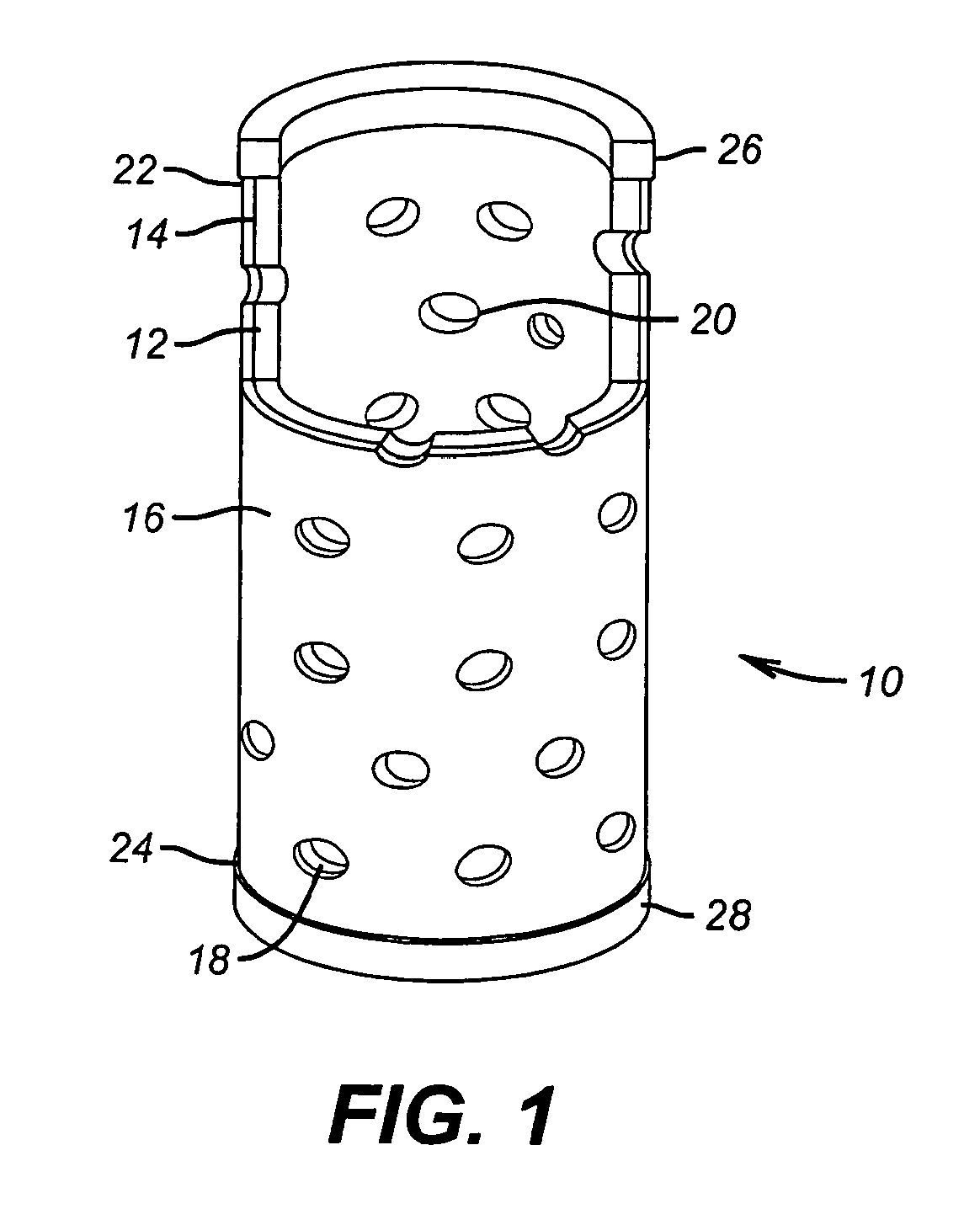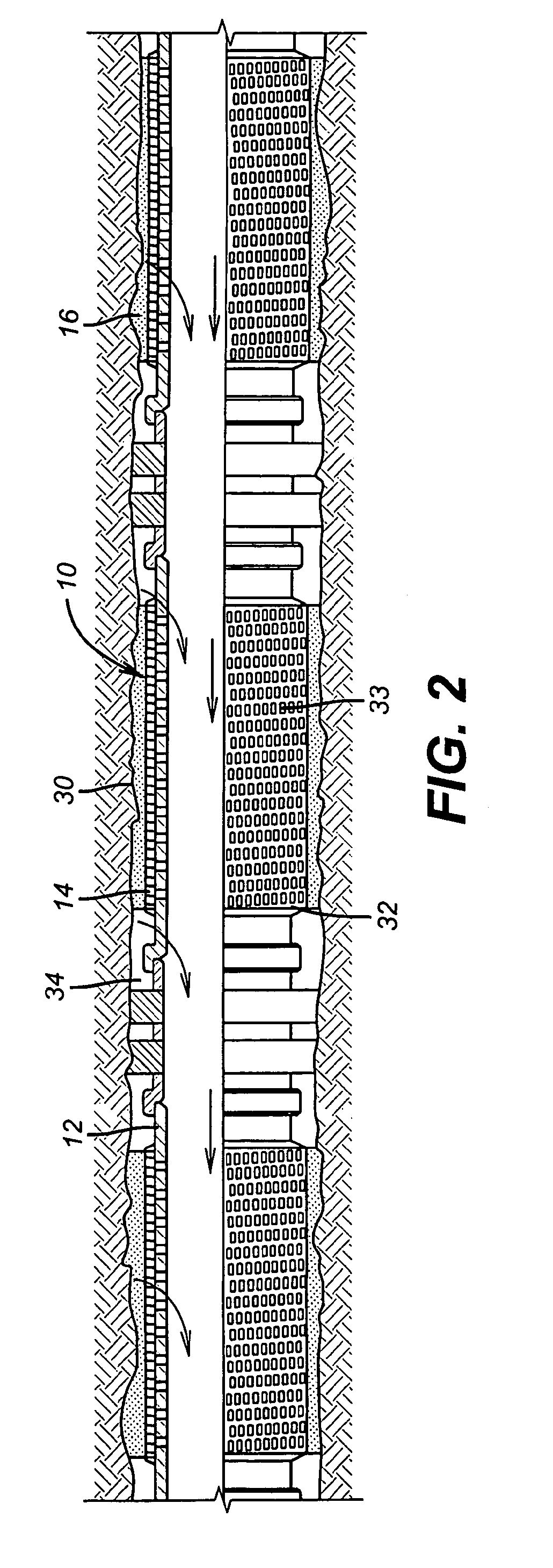Heat generator for screen deployment
a heat generator and screen technology, applied in the field of downhole screens, can solve the problems of large annular space outside the screen, risk of sticking the fixed swage, and the screen expansion technique as a replacemen
- Summary
- Abstract
- Description
- Claims
- Application Information
AI Technical Summary
Benefits of technology
Problems solved by technology
Method used
Image
Examples
Embodiment Construction
[0014]It has been discovered that a novel chemical catalyst system may deploy a shape memory foam screen to accomplish the purpose of expanding the screen to bridge an annular gap to a wellbore wall at a relatively precise downhole location. The simplicity and heat generated locally make it a much more attractive alternative than conventional downhole heating devices that lack sufficient amperage to produce the required heat for deployment, or where the heat dissipates from the surface to the deployment site.
[0015]The apparatus and method herein addresses the task of providing a sand control screen downhole by providing a screen assembly with an outer layer that can conform to the borehole shape upon expansion. In one non-limiting embodiment, a material is selected that will swell, expand, enlarge or otherwise deploy to further promote filling the void areas in the borehole after expansion. In an alternative design, screen expansion is not required and the outermost layer swells to ...
PUM
 Login to View More
Login to View More Abstract
Description
Claims
Application Information
 Login to View More
Login to View More - R&D
- Intellectual Property
- Life Sciences
- Materials
- Tech Scout
- Unparalleled Data Quality
- Higher Quality Content
- 60% Fewer Hallucinations
Browse by: Latest US Patents, China's latest patents, Technical Efficacy Thesaurus, Application Domain, Technology Topic, Popular Technical Reports.
© 2025 PatSnap. All rights reserved.Legal|Privacy policy|Modern Slavery Act Transparency Statement|Sitemap|About US| Contact US: help@patsnap.com



